Matador Network's Blog, page 597
September 2, 2021
How to see the marvelous annual migration of tree swallows in Connecticut

This is the monthly Wildlife Spotlight, where we highlight the best time to see certain animals in all their splendor.
As the dusk begins to settle over the mouth of the Connecticut River, the first of the Tree Swallows begins to litter the sky like ashes from a campfire. Soon their numbers climb into the hundreds of thousands in this, the beginning of their evening ritual during the swallows’ annual autumn migration. Clusters of swallows combine, creating both small and large flocks.
They weave and sway in unison, miraculously never colliding. When the time is right, the swallows, some years half a million strong, gather closer and closer together. They fly like one, swirling upwards, then down, left, and then right. Finally, through some secretly communicated directive, the flock knows to rise one last time before descending in a thick tornado-like cloud to nest among the reeds for the night.
These swallows are a twisting tornado of flying birds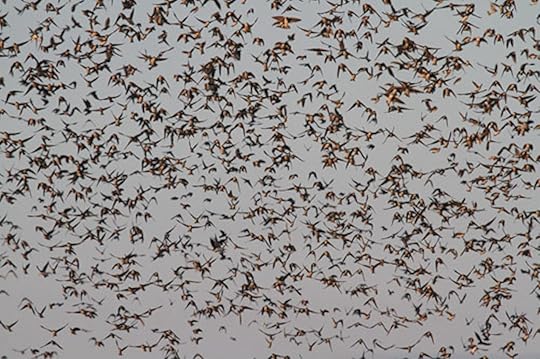
River Quest
Having witnessed this on many occasions, I can promise you that words and photos alone do not do justice to the event. Some evenings the birds create a more distinct funnel and well-orchestrated descent; other nights the highlight is the dipping and gliding of the birds as they skim the water for a sip or a bath. Always, the sky is thick with enough birds to register on weather radars.
Acclaimed ornithologist and bird guidebook author Roger Tory Peterson, who lived in Old Lyme from 1954 until his death in 1996, reportedly said he’d never seen a more impressive spectacle of flying birds — and he had observed birds around the world — than the “twisting tornadoes of tree swallows” he saw in Connecticut one October evening.
Birds-flying-connecticut-swallows-perched-reeds credit River Quest
His first time seeing that spectacle was in 1994. The tree swallows’ nightly ritual generally happens from late August until mid to late October. Over the last ten years the migration time frame has moved up. Scientists believe it is due in part to climate change, which has had an impact on the timing of the emergence of insects. Humans’ success in eradicating pesky insects, the swallows’ primary diet, is also putting stress on the populations.
The first person to write about these birds flying was Henry Golet in 1970, though the annual event had likely been happening since much earlier. Only in the last few years has it become more widely known, attracting sunset kayakers, canoeists, and public and private boaters. Canoeists and kayakers can put in at Pilgrim Landing, which is north of Baldwin Bridge on Route 156 past the Old Lyme Marina in Old Lyme, Connecticut. The popularity of the swallow murmuration makes the parking area crowded — but people are generally courteous, jockeying cars and boats to make room for all.
What is the best way to see these migrating birds flying?Birds-flying-connecticut-swallows-over-river credit River Quest
But here’s a little-known secret: just before sunrise the swallows perform a reed exodus as noteworthy as their evening performance. At dawn, you’ll find ample parking, a deserted launch area, and a river practically empty of vessels.
A River Quest cruise, which runs out of Haddam, Connecticut, is a great option for those without a boat. Often, they will have an Audubon Society member aboard to talk about and answer questions during the three-hour tour. If you would prefer a guided canoe tour to glean more information on the swallows as well as other avians you may spot, contact the Roger Tory Peterson Estuary Center located at 100 Lyme Street. You will need your own kayak or canoe and PFD, or personal flotation device.
Goose Island in Old Lyme, just west of the mouth of the Connecticut River, is seventy-five acres of uninhabited reeds — making it a mecca for the Tree Swallows. From parts north, the swallows arrive during the migration period feeding and storing fat for their long southern journey. Some of the swallows will travel as far as Central America. When the bug buffet has been depleted and the north winds begin to blow, the birds leave, taking advantage of the air currents and tailwinds to conserve energy.
Why do these amazing birds fly the way they do?Birds-flying-connecticut-swallows-darker-thousands — credit River Quest
Some posit that the swallows gather in numbers for safety against raptor predators like Peregrine Falcons. Others believe it is fear of being the first or the last to bed down within the phragmite reeds, where land predators such as mink may lurk. It is likely a bit of both, but the social behavior goes beyond just the aerial display — and it’s thought that some of the birds remain awake, on guard for predators, keeping the group safe on the ground as well.
Each night the show is a little different, varying in part to the night’s weather as well as the preceding summer’s climate. For many observers, it is a leisurely floating cocktail party accentuated by an aerial bird ballet and brilliant sunset. So, bring some hors d’oeuvres and a beverage, a flashlight for the return to your put-in, your camera, and binoculars. But don’t bring a drone. They have been known to disrupt the flock’s behavior — making drone use a violation of federal law protecting migratory species. 
The post How to see the marvelous annual migration of tree swallows in Connecticut appeared first on Matador Network.
‘Ted Lasso’ depicts one of the most endearing tributes to English pub culture

The first time we’re introduced to The Crown & Anchor pub in season one of Ted Lasso, the titular character and Coach Beard are reading notes from a suggestion box they’ve set up in the locker room of the football club they’ve been, controversially, put in charge of running. The adorably clueless Midwesterner arrived at the home of AFC Richmond oblivious to even the most basic rules of football. Lasso hoped the suggestion box would help the players feel comfortable with their new boss, but all the suggestions in the box contain rude — or, to borrow a word from the show’s sports commentators, “fruity” — language. That’s when the matriarch of The Crown & Anchor approaches Ted with a vital life lesson.
“You don’t want to let them call you a wanker, Ted. It’s bad,” she says, performing a hand gesture to demonstrate the meaning of the word “wanker.”
Mae is the bartender at The Crown & Anchor, a die-hard AFC Richmond fan, and a maternal figure to the rough and rowdy young men who frequent her establishment. The most fervent of these fans are of course Baz, Jeremy, and Paul. The trio of friends think of Mae’s pub as their second home where they can play darts, down pints, and scream abuse at the TV during AFC Richmond matches.
Mae embodies the energy of The Crown & Anchor: Comforting but rough around the edges; friendly but a little intimidating. Lasso quickly makes the pub his home base. It’s where he gathers the team, strategizes with Coach Beard, and where he defeated the villainous Rupert at darts in front of a crowd of awe-struck onlookers. And it’s at The Crown & Anchor that fans of the show will fall in love with English pub culture.

Photo: Apple TV
The Crown & Anchor’s charm is further bolstered by its location. The lush pink potted flowers that hang over the windows, the paved sidewalks and picnic tables, and the pair of classic red telephone booths just outside the doors create a cozy atmosphere. It perfectly captures the quaint village life vibes that make England such a desirable place to visit. If you’ve been itching to travel, the homey, comfortable atmosphere of not just The Crown & Anchor but of Ted’s little corner of Richmond in general might tempt you to hop on the next available flight.
There are many pubs like The Crown & Anchor in England. It’s often quiet (unless there’s a match on), and there’s soft carpet underfoot and low yellow lights that add warmth to the dark wooden walls. The hum of conversation and a foamy pint of beer in front of you is completely within reach for any visitor to England. The pub is a staple of British social life, and no matter where on the isle you’re visiting, you won’t have trouble finding one that fits your mood.

Photo: Apple TV
The pub is an unlikely refuge for the misfit Lasso, who has trouble adjusting to English culture (well, mostly just the tea). It might be for you, too. Part of what helps Lasso eventually feel at ease is the all-are-welcome, egalitarian attitude of The Crown & Anchor, which I would wager is common at most real life pubs too. Just about everyone in Richmond is deeply skeptical of Lasso’s American ways and have no problem voicing their dislike of him to his face. Yet there’s the very real sense that when someone steps inside the pub, they become a member of an unyieldingly loyal family united around sports and beer.
This might sound like an idealized depiction of the typical British pub. It also might sound intimidating — especially if you’re walking into a room full of regulars and friends who don’t necessarily look kindly on strangers encroaching on their territory. But speaking from experience, that chilly atmosphere quickly thaws once you settle in and order a drink. It’s well-worth braving an initial bout of perceived hostility to inevitably experience the very warm and pleasant feeling that you’re at home in this country of boots (cleats) and gaffers (coaches).

Photo: Apple TV
The appeal of The Crown & Anchor in Ted Lasso is that Lasso himself — despite the fact that he’s the manager of a prominent football team — is not a celebrity in the pub. He’s just another guy. English pubs are the perfect place to blend in, sit in a dark corner with a drink, and pretend like you belong even if you’re a little lost. After a long day of exploring, what better way to unwind than among the locals. Within the confines of the pub, it’s easy to shed that tourist label and adopt the gruff-but-kind attitude the Brits are known for.
Ted Lasso may make you feel a lot of things. It may inspire you to behave with more kindness and compassion — even, or especially, toward people you don’t particularly like. It may uplift your spirit, or help you find humor and hope in difficult, even heartbreaking situations. It’s a powerful show that way. At the same time, it also offers a view of England as a place full of creature comforts and simple things — like a public house packed full of your friends or your potential friends. In that, it brings a lot of joy in a time that can sometimes seem desperately hopeless. That’s the sort of place that I would like to visit. 
The post ‘Ted Lasso’ depicts one of the most endearing tributes to English pub culture appeared first on Matador Network.
21 reasons to love Kansas City

The major cultural renaissance taking place in the Midwest is worth bragging about — 21 times over. And leading the region’s decades-long creative charge is Kansas City, an easy drive for millions of Americans in the heart of the New Midwest.
Every year, KC innovates — new breweries and wineries, new top-notch museums and cultural hotspots, new next-gen barbecue joints, and new options for outdoor adventure. So even if you’ve visited before, your next trip to Kansas City will show you all new reasons to fall in love. Here’s why.
1. Downtown is expanding, Kansas City-style…
Photo: Nicole Bissey Photography/Visit KC
There are even more options to bed down in downtown KC with the recent opening of the stellar (800-room!) Loews Kansas City Hotel. The skyline-defining spot pays tribute to its New Midwest surroundings in its decor, and its restaurants and bars make serious use of locally sourced ingredients. Stay here and you can walk — or ride, for free (see below) — to just about anywhere.
2. …and public transport is free.Kansas City is the first place in the country to offer free public transport. Both the KC Streetcar — opened in 2016 between Union Station and City Market — and now the citywide bus service are free for all riders. Budget-friendly fall getaway, anyone?
3. Exciting distilleries are opening…
Photo: Travis Carroll/West Bottoms Whiskey Co.
Tapping into the city’s anti-Prohibition history a century later, new Kansas City distilleries are popping up around town, and they’ve even created an officially recognized flavor called “Kansas City Whiskey.” Opened in February, West Bottoms Whiskey Co. claims the title of KC’s newest distillery — for now.
4. …and Midwest wines are on the rise.With a deeply rooted history that lay dormant for decades following Prohibition, wineries in Kansas and Missouri are once again starting to register on the radar of in-the-know wine lovers. Find your new favorite Midwest-grown grapes at KC Wineworks, which serves only Missouri-grown pours.
5. Live music is back.
Photo: Brian Paulette/Visit KC
As clubs and lounges reopen their doors, live music is back in the air around 18th & Vine, Kansas City’s historic jazz district. Catch shows at venues downtown as well, including the iconic Green Lady Lounge, where local jazz musicians play original compositions into the wee hours.
6. There’s now more wonder to be had at Wonderscope.The Wonderscope Children’s Museum of Kansas City has moved to a huge new space — 30,000 square feet indoors, half an acre outdoors. Now, the little ones have even more room to get crafty with hands-on exhibits about science, technology, engineering, art, and math. From pint-sized barbecue joints to climbable caves to steam engines, it’s all loosely KC-themed, of course.
7. Made in KC makes it simple to shop local.
Photo: Visit KC
Made in KC is a delightful one-stop shop for all things Kansas City, featuring locally made products and souvenirs. Actually, it’s a collection of one-stop shops, with locations throughout the metro that feature cafes as well as inviting retail spaces. Whether you’re after something specific to commemorate your trip or just want to browse the incredible offerings — from home goods to clothing, one-of-a-kind art pieces to locally crafted cosmetics — of Kansas City creators, Made in KC makes it easy.
8. Union Station now has more than just its own history.Bringing together more than 1,000 original objects and photographs, Holocaust museums around the world have collaborated to create the most comprehensive exhibit on Auschwitz to date. It’s all on display now through January 2022 at Kansas City’s Union Station — and KC is one of only two cities in the US to host the groundbreaking installation.
9. It’s time to celebrate over 100 years of the Negro Leagues…
Photo: Negro Leagues Baseball Museum
KC has long been a baseball town. The Negro Leagues — professional leagues for Black players during the early and mid-20th century who at that time were excluded from the Major Leagues — were founded in 1920 at a Kansas City YMCA. You can learn about the famous players and hear their stories at the Negro Leagues Baseball Museum, one of many KC cultural gems.
10. …and the return of the Monarchs.Kansas City’s minor league baseball team has revived a historic moniker: the Monarchs. The longest-running team in the Negro Leagues, the Monarchs produced more Major League players — think Jackie Robinson and Hank Thompson — than any other franchise. And now spectators can watch the Monarchs hit moonshots for the first time since the 1960s.
11. The barbecue is still smokin’…
Photo: Ben Pieper/Visit KC
Kansas City already has more than 100 barbecue restaurants serving up its signature style of smoked meat and sauce, but even more names continue to be added to its impressive roster. To scout out the full list and start checking off spots on your barbecue bucket list, download the KC BBQ Experience app.
12. …but the food scene is getting even more diverse.KC is rightfully known for its homegrown slow-smoked barbecue, but the city’s flavor palate goes well beyond brisket. Recent additions to Kansas City’s globally inspired food scene include Baba’s Pantry, dishing out Palestinian favorites, and Poiō, with its beloved interpretation of mouthwatering Mexican barbecue. From James Beard awards to “cheese slippers,” it’s all being crafted, roasted, carved, or cooked up in KC.
13. KC has the region’s best art museum, and it keeps getting better.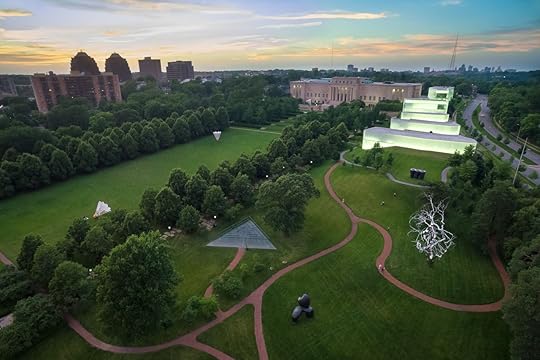
Photo: Don Ipock/The Nelson Atkins Museum of Art
Home to more than 35,000 pieces, The Nelson-Atkins Museum of Art is perhaps the premier institution of its kind in the Midwest, if not the nation, with a renowned collection of Asian art and European paintings. But that doesn’t mean its exhibits are dusty and out of touch — current displays tap into topical narratives in American culture, including pieces on the Black experience by the Kansas City-based African American Artists Collective. Meanwhile, famous works are being shown in a new light — literally — with Monet’s Water Lilies set in a new immersive display.
14. Kansas City now has a women’s soccer team…again!They’re back for the first time since 2017, thanks to an expansion by the National Women’s Soccer League that was awarded to the city last December. Wondering what they’re called? That gets announced this coming November, with fans ready to chant the new name next season (May to August, 2022) at Legends Field.
15. KC shopping is international in spirit — and best done outdoors.
Photo: Visit KC
Kansas City’s Country Club Plaza, an outdoor shopping district sporting historic Spanish-inspired architecture, is an integral part of KC’s urban-outdoor lifestyle. Though the outdoor trend is bigger than ever these days, this isn’t exactly a 2021 grand opening: Country Club Plaza was one of the nation’s first planned shopping centers, doors open since 1923.
16. Kansas City is on the A-list.Jason Sudeikis, the disarmingly charming star of Ted Lasso, isn’t the only celebrity who touts KC hometown pride. Actors Paul Rudd, Don Cheadle, Rob Riggle, and singer Janelle Monáe all hail from KC, too. (Even Walt Disney had KC roots!)
17. The trails are even longer…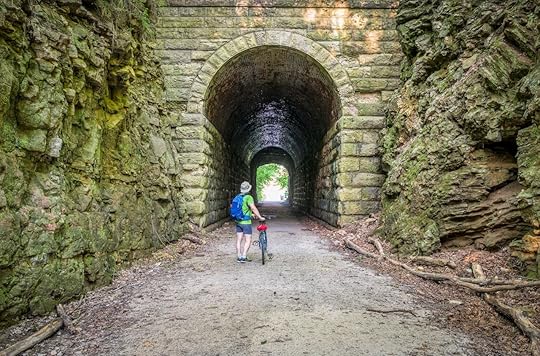
Photo: marekuliasz/Shutterstock
The Katy Trail, the USA’s longest developed rail-trail at 240 miles, will eventually cross the entirety of Missouri from east to west. The newest segment was unveiled this summer, and walkers and cyclists can now head out for a day on the trail from south of downtown Kansas City. (In the coming years, it’s planned to connect right to Country Club Plaza!)
18. …and some of them wind through town.Thanks to new offerings from Urban Hikes KC, four- to six-mile treks can be had right in downtown, highlighting KC’s mix of modern and old-school history. Hike through the city’s art scene, hike from one wine-and-cheese spot to another, hike along KC’s portion of the Santa Fe Trail — there’s loads to explore in a city this culturally significant.
19. Two words: (even more) craft beer.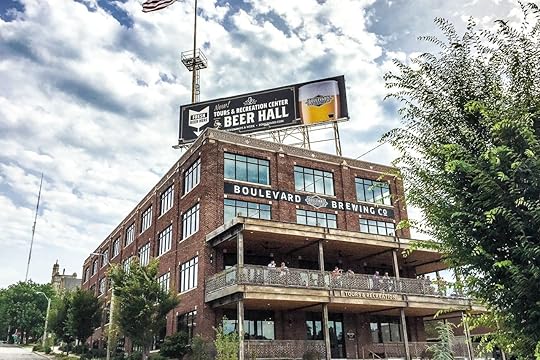
Photo: Visit KC
Boulevard Brewing Company, a stalwart of Kansas City beer known from coast to coast, is still going strong, but more craft breweries are continually coming online, showcasing KC’s unique take on hops, malt, and yeast. Catch the latest with the KC Tap Tour, a digital pass that offers deals and discounts at 27 local breweries.
20. Here, world history hits home in virtual reality.Kansas City is home to the National World War I Museum and Memorial, the country’s official — and only — museum dedicated to the Great War. A new virtual reality experience called War Remains presents the conflict from a soldier’s point of view, and Dan Carlin, the legendary host of the Hardcore History podcast, provides the narration.
21. KC is still the City of Fountains.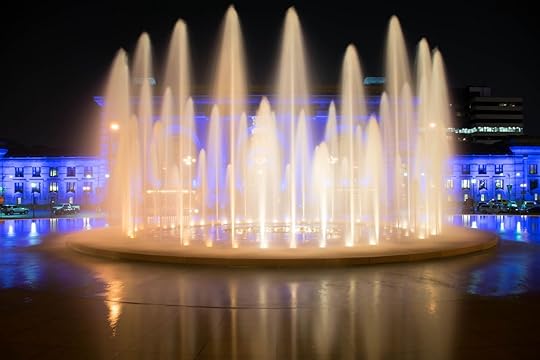
Photo: Melanie Hoffman/Shutterstock
Second only to Rome, the number of fountains in Kansas City is truly monumental. Beautifully designed with distinct architectural features that span more than a century’s worth of styles, many of them grace the city’s parks, giving you even more to explore on your outdoor-KC days. How many of the 200+ will you uncover on your trip? 
The post 21 reasons to love Kansas City in 2021 appeared first on Matador Network.
The best travel gear on Amazon’s Labor Day sale

It’s finally here — the most wonderful time of the year. No, not Christmas in the traditional sense, but it’s a kind of Christmas for travelers and online shoppers. Amazon’s Labor Day sale is upon us, and that means deals on literally everything you can possibly imagine. You could wade into the endless ocean of Amazon products alone and without a life vest, but you’ll probably end up drowning in an ocean of credit card debt and leggings you’ll never wear. Instead, you could just check out our list of the top items for travelers on Amazon’s Labor Day sale. We compiled this year’s best Labor Day sale travel items, so you don’t have to spend hours sifting through the options. From earbuds to doggie water bottles, these are the Labor Day sale items to keep your eye on.
We hope you love the spaces and stays we recommend! Just so you know, Matador may collect a small commission from the links on this page if you decide to book a stay. Listed prices are accurate as of the time of publication. See our full Advertiser Disclosure here.
VICSEED Car Phone Mount
Photo: VICSEED/Facebook
The VICSEED phone mount is the ultimate road trip companion. Instead of reaching for your phone every 10 minutes to check the GPS, change the music, or glance at a text, you can simply use this mount to keep your phone in a convenient and visible location. It can be mounted to your dashboard, windshield, or vent, and features an extra strong suction cup to prevent accidental slippage. You might feel a bit like an Uber driver, but you’ll also love the convenience.
Price: $21.11 — reg. $24.95
Tongue Scraper with Travel Case
Photo: Mastermedi/Facebook
A tongue scraper might sound a bit gross, but so is bad breath. When you’ve just spent six hours in a plane or car, you might want to freshen up without rummaging through your bag to find a toothbrush. This tongue scraper, which comes with a travel case, allows you easily scrape the bacteria off your tongue and teeth for fresher breath and cleaner teeth without the logistical nightmare of digging for your toothbrush and toothpaste.
Price: $8.15 — reg. $9.99
Lesotc Pet Water Bottle for Dogs
Photo: Lesotc/Amazon
Humans love water bottles. Just hang out at a popular summit in Colorado, and you’ll see more water bottle brands than people filming themselves for YouTube — and that’s saying something. Dogs work just as hard as humans to get up those mountains, and finally, there’s a product designed for them. This design melds water bottles with doggie bowls, with a cap acting as a water bowl. Just press the water bottle with one hand and the water flows into the bowl. Perfect for hiking with your dog, the water bottle is lightweight and compact, and can even be recycled.
Price: $13.99 — reg. $15.97
Skullcandy Indy Evo True Wireless In-Ear Earbud
Photo: Skullcandy/Facebook
Whether you’re on a plane, train, bus, or trying to take a remote work call in a coffee shop, headphones are essential. No one wants to spend five minutes untangling wires every time they pull their earbuds out of their pocket, but the expense of AirPods often isn’t worth the social capital you get from wearing them. Enter the Skullcandy Indy Evo True Wireless In-Ear Earbuds. A much more affordable alternative to AirPods, these wireless earbuds have 30 hours of battery and rapid charge technology, making them perfect for on-the-go use.
Price: 49.68 — reg. $79.99
Flents Ear Plugs
Photo: Flents/Amazon
For travelers, the invention of earplugs was as momentous as the invention of the wheel. Whether you’re trying to block out noise at the hotel so you can sleep, or trying to drown out the tedious conversation of the guy next to you on a plane, earplugs are an absolute necessity. These plugs are designed to block out music, snoring, heavy machinery, and other loud noises, and with 70 pairs to a pack, one pack should last you an entire trip.
Price: $16.99
BAGSMART Toiletry Bag Hanging Travel Makeup Organizer
Photo: BAGSMART
There’s nothing worse than TSA ripping apart your bag and slowly undoing what took you hours to pack. This transparent TSA-approved toiletry bag is designed to pass through security without raising any red flags. It has a 360-degree metal hook for hanging, a carry handle that doubles as a hanging strap, a two-way zipper, and main pockets with elastic straps to hold the bottle upright. It’s designed with travel in mind, to make accessing your beauty products as convenient as possible.
Price: $23.79 — reg. $31.99
Vont 4 Pack LED Camping Lantern
Photo: VONT
Avid campers don’t need to be told that a reliable lantern is essential for any camping trip. These LED lanterns are ideal for a fall camping excursion, equipped with 30 bright LEDs designed to cut through the pitch black night. They have a collapsible design that either reduces or increases light, making it versatile for all occasions and perfect for travel use.
Price: $19.99 — reg. $27.99
Space-Saving Collapsible Hanger Holder
Photo: Honey Cando
There’s nothing worse than showing up to an Airbnb, unpacking your suitcase, and realizing there’s nowhere to hang your clothes. Maybe you’re moving abroad for a few months, or just staying in an Airbnb or hotel for a few weeks — closet space is useless without hanger space. This hanger holder has over-the-door hooks, perfect for storing clothes or holding them while they dry. When not in use, just collapse the hanger holder and put it back in your suitcase.
Price: $9.99
Convertible Car Seat Travel Belt and Strap
Photo: Alnoor/Amazon
The perfect option for those traveling with small children, this versatile item turns your rolling back into a portable car seat, which works with all car seats that have a top tether. It takes just a few seconds to attach or remove the car seat from your luggage, and it can be folded nd and stored pretty much anywhere.
Price: $13.95 — reg. $19.95
Fengdong 40L Waterproof Lightweight Backpack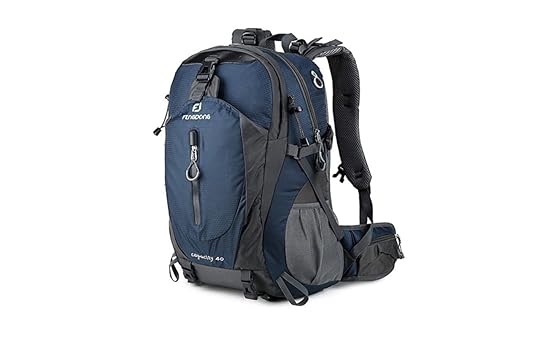
Photo: Fengdong/Amazon
This backpack has everything you could possibly want in a piece of hiking gear. Made with extra thick, tear- and water-resistant polyester fiber, the backpack features breathable mesh padding, a lightweight design, and is ergonomically designed to provide body comfort even when the pack is full. It also has a multi-compartment design with bags designed to help you organize all your equipment. 
Price: $32.99 — reg. $49.99
More like thisCampingEverything you need to stay warm and cozy for fall campingThe post The best travel gear on Amazon’s Labor Day sale appeared first on Matador Network.
September 1, 2021
Amtrak’s Fall Flash Sale will have you travel across the country for 50% off

The end of summer is here, and with the weather cooling down, it’s time to think about a leaf-peeping getaway. And there’s no better way to enjoy Mother Nature’s most beautiful spectacle than by taking a long, romantic train trip. Luckily, Amtrak’s Fall Flash Sale will have you on the train this fall for 50 percent off.
Amtrak’s Fall Flash Sale is offering half-price Coach and Acela Business Class tickets, with 500 destinations to choose from.
For the slashed price of a plane ticket and without the traffic of a road trip, you could travel to some of the country’s most beautiful national parks or even across the entire US.
Some great deals for one-way trips during Amtrak’s Fall Flash Sale include:
New York to Washington, DC for $28 Coach; $60 Business ClassWashington, DC to Philadelphia for $17 Coach $43 Business ClassNew York to Boston for $28 Coach; $49 Business ClassChicago to Washington, DC for $53 CoachChicago to Denver for $63 CoachLos Angeles to Seattle for $63 CoachPortland to Seattle for $18 CoachNew York to Miami for $81 CoachTickets must be booked between September 1 through September 8, 2021, for travel between September 8 and November 18, 2021. Be sure to purchase the tickets at least three days before booking the trip. 
The post Amtrak’s Fall Flash Sale will have you travel across the country for 50% off appeared first on Matador Network.
This library was just named the best in the world

Book worms have one more beautiful library to add to their must-see list. On August 19, the (IFLA) announced its pick for the world’s best public library of 2021: Deichman Bjørvika.
In 2021, 32 libraries competed for the world’s best public library award, five were shortlisted before Deichman Bjørvika eventually won the title.
Deichman Bjørvika, which opened in 2020, is Oslo’s main library. Located on the city’s harbor front, the public library is an architectural standout. The immense building is covered entirely in thin, vertical windows, and it has an impressive cantilevered fourth floor that juts out 65 feet above the plaza where the entrance to the building is situated.

Photo: Visit OSLO / Didrick Stenersen
Inside, Deichman Bjørvika is just as exciting. The library has six floors, all flooded in light thanks to the many windows and three huge geometric skylights. The decor is angular, and the subtle tones provide the peaceful atmosphere you expect from a library.
The design for this immense and one-of-a-kind library is the work of architecture studios Lundhagem in collaboration with Atelier Oslo, which wanted “to create an open and intriguing building in which you are constantly invited around the next corner, to discover new places,” according to the Atelier Oslo website.

Photo: Erik Thallaug / Deichman Bjorvika
While it’s dedicated to literature, Deichman Bjørvika’s many floors house much more than books. There are, of course, reading and study areas, but there’s also an entire floor dedicated to children, as well as a café, a restaurant on the first floor, a cinema, and an auditorium in the basement.

Photo: Erik Thallaug / Deichman Bjorvika
Even better, Deichman Bjørvikat is equipped with everything creatives may need: 3D printers, sewing machines, and music and sound studios. There’s also a self-service set-up to check out materials, and the library is equipped with a revolutionary automatic book-sorting system.
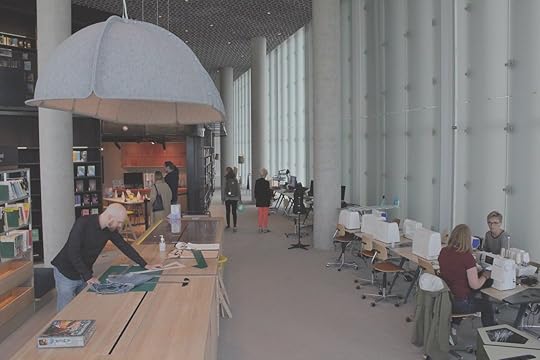
Photo: Maria Bagtas / Deichman Bjorvika
Deichman Bjørvika is a free cultural hub and a gathering space for all. Public libraries are some of the few spaces where one can enter and stay all day without the expectation to purchase anything. A library as modern and beautiful as Deichman Bjørvika is a gift to all community members. 
The post This library was just named the best in the world appeared first on Matador Network.
5 unexpectedly great places for bachelor and bachelorette parties in the US

We hope you love the spaces and stays we recommend! Just so you know, Matador may collect a small commission from the links on this page if you decide to book a stay. See our full Advertiser Disclosure here.
Oh, you’re going to Vegas for your bachelor party? Nashville for a bachelorette? Cool. So is everyone else. Yeah, you could post a flurry of post-trip Instagram photos of you and the boys on the Strip with a super clever original caption like “What happens in Vegas…am I right?” Or, you could go somewhere that hasn’t already been tagged a thousand times that week in nearly-identical bachelor party posts.
Big-name party destinations like Las Vegas, Nashville, New Orleans, Los Angeles, New York, and Atlantic City understandably attract the lion’s share of bachelor and bachelorette parties. That doesn’t mean they’re actually the best places to go to celebrate, though. Cities like Orlando, Jackson, and Cedar Point might not be synonymous with bachelor party shenanigans, but that’s exactly what makes them such appealing options when you know what to plan around.
These are the destinations you probably haven’t considered for a bachelor or bachelorette party, but should.
1. Hudson Valley, New York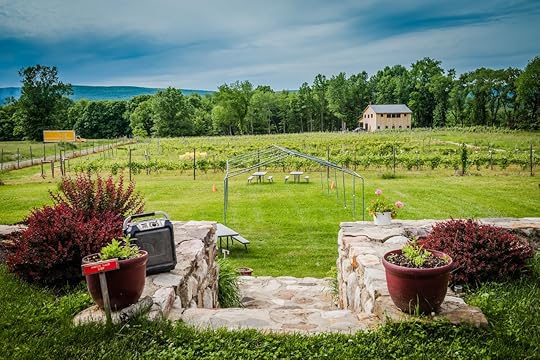
Photo: Sandra FoytShutterstock
New York City and the Hamptons might dominate the “where to go for a bachelor party” discussion, but if you don’t want to spend your life savings on one long weekend, don’t overlook the Hudson Valley. While NYC has skyscrapers, nightclubs, and bright lights, the Hudson Valley has fall foliage, cozy towns, and bucolic charm. Stretching along the Hudson River from Westchester County to Albany, the Hudson Valley is defined not only by its slower pace of life, but also by its wineries and breweries that’ll keep you buzzing all weekend without having to adhere to a dress code.
Where to go out: Going out in the Hudson Valley doesn’t carry the same connotations as it does in a major city. Here, it means hitting up wine tasting rooms and throwing back so many beer flights you lose count. Since you’re in the land of wineries, you might as well check out the oldest in the country. Brotherhood Winery was founded in Washingtonville in 1839, and is known for its chardonnays, merlots, and cabernet sauvignons. The winery also offers a variety of meads and sangrias. Both public and private tastings are available, and the historic property hosts live music every weekend during the summer.
As for breweries, The Drowned Lands in Warwick is one of the most scenic you’ll find anywhere in the Hudson Valley thanks to the 100-year-old building it’s housed in. The brewery stands out with its contemporary interior design, using glass, wood, dark metal, and concrete in its taproom to create a truly striking space. Outside you’ll find benches where you can sit and sip on a sunny day, with views of the surrounding 700-acre park.
Where to stay: Your experience in the Hudson Valley will vary depending on where in the region you choose to stay, though there are plenty of great options to choose from. The town of Hudson itself is home to The Maker Hotel, one of the region’s newest and most glamorous accommodations. Opened in 2020, the hotel has 11 rooms across three historic buildings: a carriage house, Greek Revival building, and Georgian mansion. Many hotels in the Hudson Valley give off a rustic vibe, but the Maker is decidedly European with its dim, intimate aesthetic. It’s the perfect place to unwind after a day of driving around exploring the region’s breweries and wineries.
2. Cedar Point, Ohio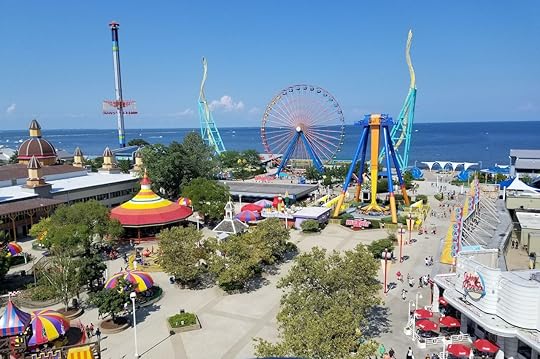
Photo: Brady James SmithShutterstock
There’s no better metaphor for preparing for marriage than hurtling through the air at breakneck speeds until you feel sick. As such, it doesn’t get more appropriate than Cedar Point for a bachelor party. Considered the unofficial roller coaster capital of the US, Cedar Point sits on a peninsula of Lake Erie in Sandusky, Ohio, and is the second-oldest amusement park in the country. The park has 71 rides, including 17 roller coasters, and is also home to a white-sand beach outdoor water park and an outdoor sports complex. Instead of blowing thousands of dollars on a high-rise hotel and bottle service at nightclubs, just drop $50 for a day pass and get unlimited access to all the park’s attractions.
Where to go out: Beyond the rides themselves, Cedar Point has a summer music series that’s perfect for groups on vacation. Live music takes place every night of the week from mid-May through mid-September, with bands from all over the country coming to perform at Cedar Point. For those looking for a bit more edge, the park also hosts Cedar Point Nights from early August to early September. This is basically a DJ dance party on the beach, with fire pits, sand games, and glow-in-the-dark dining.
Where to stay: The South Beach Resort is about a half hour from the park, but its location right on the lake is worth the distance. With a private beach, heated pools, paddleboard rentals, tennis courts, and sand volleyball, the resort is pretty much built for groups looking to have a good time. There’s also 18 cottages that accommodate large groups, making it perfect for a bachelor or bachelorette weekend.
3. Killington, Vermont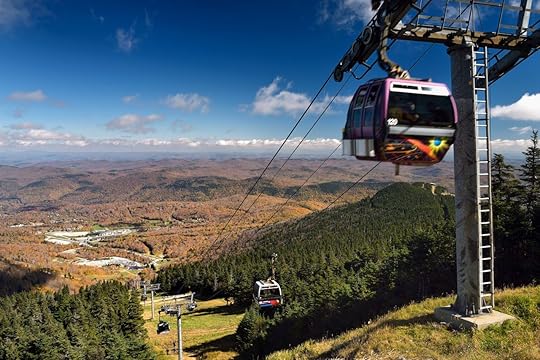
Photo: ReimarShutterstock
It doesn’t matter if your friends ski or just enjoy the apres-ski culture — mountain towns are always a good time. While you can visit Killington and enjoy Vermont’s lush landscape year-round, this town really comes alive in the winter. Killington attracts skiers and snowboarders from all over New England to enjoy its epic slopes, abundant restaurants, hopping breweries, and nightlife that stands head-and-shoulders above other mountain towns. If snowsports are your group’s forte — great. You’ll have no problem staying busy. If not everyone in your group skis or boards, there’s still plenty of ways to have a weekend in Killington, from chilling in the hotel hot tub to checking out Long Trail Brewing Company.
Where to go out: There are two main bars in Killington, and you can’t go wrong with either one. Pickle Barrel Nightclub is a two-floor venue with a dance floor that regularly hosts live music. It also serves late-night pizza, which is one of the most valuable commodities there is at 2 AM. Just down the road, the Wobbly Barn — located inside an actual barn — is a steakhouse by day, live music venue by night. Hosting both bands and DJs, the Wobbly Barn is a bit smaller than Pickle Barrel but equally popular. No matter which venue you choose, don’t be surprised if you recognize no less than a dozen people from the slopes earlier that day.
Where to stay: There are a few hotels in Killington, but for large groups who want more bang for their buck, it’s best to book an Airbnb. This four-level house, for example, fits 15 guests in three bedrooms. There’s a balcony with picturesque views of the woods, a fireplace, pool table, and, most importantly, an outdoor hot tub. It’s located just 15 minutes from downtown Killington, making it easy to access the mountain in the daytime and the bars at night.
4. Orlando, Florida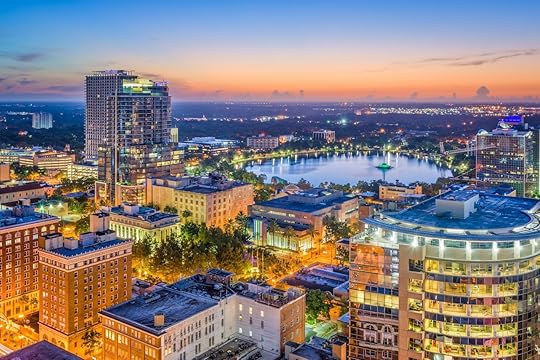
Photo: Sean PavoneShutterstock
Orlando is synonymous with the country’s most popular theme parks, including Disney World, Universal Studios, SeaWorld, and LEGOLAND. Your bachelor or bachelorette group could easily spend an entire weekend at any one of these parks and still not experience a fraction of what they have to offer. The city of Orlando, however, has much more to offer than simply theme parks.
With easy access to the Intercoastal Waterway and several beautiful lakes, Orlando is perfect for outdoor exploration. You can rent paddle boards along the Intercoastal with Epic Paddle Adventures, or take a group trip to one of the lakes or springs for a relaxing afternoon of sunbathing. Since Orlando is under an hour from the Everglades, it’s also an ideal base for an airboat tour of the area’s alligators, birds, and fish. Speaking of alligators, Gatorland is one of Orlando’s most iconic attractions, home to thousands of alligators and crocodiles, as well as Florida panthers, an aviary, and a breeding marsh with an observation tower. Add to this the seemingly limitless options for dining and nightlife and you’ve got a bachelor or bachelorette party destination that rivals any of the major players.
Where to go out: Pointe Orlando should feature prominently in any group night out in the city. The shopping, dining, and entertainment district on International Drive is home to several restaurants, ropes courses, bowling, and, perhaps most importantly, Blue Martini. Blue Martini is a diverse nightlife experience, offering three separate and distinct bar areas under one roof. Check out the patio for a casual night out, the VIP lounge for a ritzier evening, or the stage if you’re in the mood to dance to live music and DJs. The bar also has a happy hour every day with discounts on specialty martinis, craft cocktails, and tapas.
Where to stay: In big cities like Orlando, it’s all about location. Unless you’re going the theme park route and staying in a Disney resort, you’ll want to position yourself as close to the action as possible. That means staying right downtown in the Grand Bohemian Hotel, one of the most opulent hotels in the city. This stylish hotel has a chic, modern, and luxurious aesthetic, with public spaces furnished with leather chairs, chandeliers, and oak tables. It’s also home to an art collection worth over $6 million. So basically, if you’re looking for a suitable backdrop for group pictures, you don’t even have to venture outside. For many guests, the hotel’s most attractive feature is its close proximity to some of the city’s best restaurants, bars, and nightclubs, meaning you’re less likely to lose the groom in a Hangover-esque fiasco while navigating back from the nightclub at 4 AM.
5. Jackson, Wyoming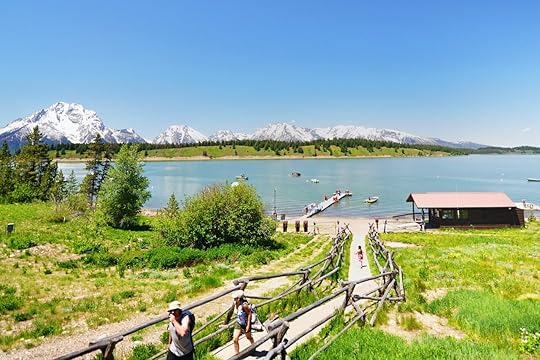
Photo: tusharkoleyShutterstock
Jackson is one of the most picturesque mountain destinations in the West, and it’s a popular retreat for the likes of Brad Pitt, Matthew McConaughey, Tiger Woods, and Kim Kardashian. You and your friends might want to add your names to that list. Jackson’s nightlife can’t match the major cities, but its stunning natural beauty will make you forget all about the VIP bottle service you might have had in Miami. Located next to Yellowstone and Grand Teton national parks, Jackson is a no brainer for any group that includes outdoor enthusiasts. Whether it’s hiking the dramatic ranges of Grand Teton, rafting the Snake River, relaxing in the Granite Hot Springs, or peeping the wildlife at the National Elk Refuge, there’s never a dull moment in Jackson.
Where to go out: When you visit a mountain town, there’s an unspoken expectation that you should visit a “Wild West” style bar. Usually that expectation is rather hollow and leads to a tourist trap. In Jackson, it’ll bring you to one of the town’s most fun and historic bars. Million Dollar Cowboy Bar has been a staple of Jackson Town Square since 1937, complete with cowboy murals and real saddle barstools. The bar hosts live music every night during the summer, attracting world-renowned artists like Willie Nelson and Glen Campbell. The live music doesn’t stop in the winter, though you’ll only find it on weekends.
Where to stay: There are plenty of luxurious Jackson-area hotels to choose from, but the Snake River Lodge stands out for both its location and its accommodation options. Right in the heart of Teton Village at the base of Jackson Hole Mountain, and just a mile from Grand Teton National Park, the hotel is ideally located for conveniently exploring the area. It’s also just 300 feet from the Jackson Hole Mountain Aerial Tram, which ascends to the best views in Jackson. On the property itself, check out the full-service spa with indoor and outdoor pools, rock caves, waterfalls, and hot tubs. As for lodging, there are 30 two-, three-, and four-bedroom residences with full kitchens — a perfect option for larger groups.
The post 5 unexpectedly great places for bachelor and bachelorette parties in the US appeared first on Matador Network.
Watch: California’s tallest, fastest, and longest dive coaster is set to open

If you’re looking for a quick adrenaline rush, SeaWorld’s newest dive coaster, dubbed ‘Emperor’, will give you what you need.
According to a press release, Emperor will be California’s tallest, fastest, and longest dive coaster.
Emperor is set to open in March 2022, just in time for spring break, so mark your calendars.
This highly anticipated coaster will also be California’sonly floorless dive coaster.
According to the press release, this new dive coaster was named after the world’s largest penguin (San Diego SeaWorld is reportedly the only place in North America where one can see Emperor penguins). The ride will mimic this species’ amazing underwater diving ability.
Riders will experience 2,500 feet of track, climb to 153 feet in the air, be suspended at a 45-degree angle, and plunge down a 143-foot vertical drop at more than 60 miles per hour. The ride will feature inversions, a barrel roll, Immelmann loop, hammerhead turn, and flat spin.
“Opening just in time for Spring Break, this free-falling, feet-dangling ride is going to provide even more thrills that our guests and coaster fanatics have been craving,” said John Dunlap, SeaWorld San Diego Park President.
Last week, the world’s fastest-accelerating roller coaster, located in Japan, closed after riders reported several injuries when on the ride between December 2020 and August 2021.
Originally the ride was set to open in 2020, but due to the COVID-19 pandemic, the opening date was pushed back. If you are planning on being first in line for the Emperor, you can purchase tickets online. 
The post Watch: California’s tallest, fastest, and longest dive coaster is set to open appeared first on Matador Network.
Wildlife Photographer of the Year 2020 shows a ‘planet under pressure’
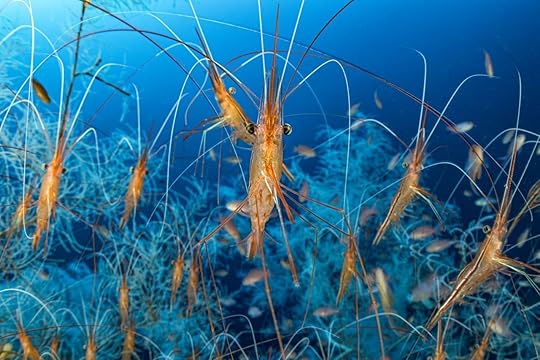
The entries for the Wildlife Photographer of the Year 2020 have been unveiled, and the selection is astonishing. Photographs of cheetahs in raging rivers and a fox searching for its prey are amongst the incredible range of highly commended images that have been released in anticipation of an exhibit at Natural History Museum in London on 15 October 2021.
The competition, produced by the museum, received a record-breaking number of photographs from professional and amateur photographers from over 95 countries worldwide.
“This year’s inspiring exhibition will move and empower audiences to advocate for the natural world,” said Dr. Doug Gurr, the Director of the Museum in a statement.
The Wildlife Photographer of the Year 2020 entries are a firm reminder of the vulnerability of our planet and the variety of its nature. This year’s competition winners will be announced on October 12, 2021, during a “not-to-be-missed” virtual awards show.
“Apollo Landing” by Emelin Dupieux, FranceHighly commended, 11-14 Years category

Photo: Emelin Dupieux/Wildlife Photographer of the Year
Emelin Dupieux’s image shows an Apollo butterfly as its sets down on an oxeye daisy.
“Beautiful Bloodsucker” by Gil Wizen, Israel/CanadaHighly commended, Behaviour — Invertebrates category

Photo: Gil Wizen/Wildlife Photographer of the Year
Gil Wizen displays a female ornamented mosquito in action.
“Storm Fox” by Johnny Armstrong, USHighly commended, Animal Portraits category

Photo: Jonny Armstrong/Wildlife Photographer of the Year
A fox searching in the shallows for salmon carcasses.
“Raw Moment” by Laura Jackson, UKHighly commended, Animal Portraits category

Photo: Lara Jackson/Wildlife Photographer of the Year
Laura Jackson captures an image of a young lioness with bright red blood dripping from her muzzle.
“The Great Swim” by Buddhilini de Soyza, Sri Lanka/AustraliaHighly commended, Behaviour — Mammals category

Photo: Buddhilini de Soyza/Wildlife Photographer of the Year
Buddhilini de Soyza captures male cheetahs swimming through raging waters.
“Toxic Design” by Gheorghe Popa, RomaniaHighly commended, Natural Artistry category

Photo: Rakesh Pulapa/Wildlife Photographer of the Year
Gheorghe Popa shot this eye-catching photo of a small river in the Geamana Valley, within Romania’s Apuseni Mountains.
“Mushroom Magic” by Juergen Freund, Germany/AustraliaHighly commended, Plants and Fungi category
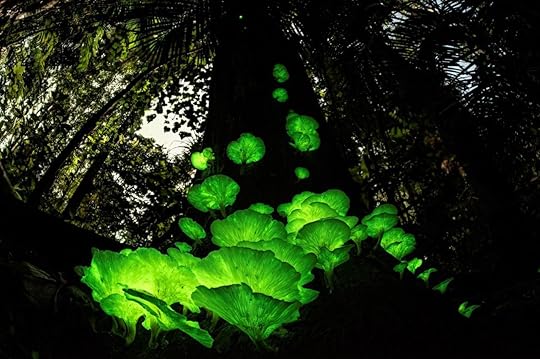
Photo: Juergen Freund/Wildlife Photographer of the Year
A ghost fungus on a dead tree after a monsoon rain.
“Lockdown Chicks” by Gagana Mendis Wickramasinghe, Sri LankaHighly commended, 10 years and under category

Photo: Gagana Mendis Wickramasinghe/Wildlife Photographer of the Year
Gagana Mendis Wickramasinghe’s photograph shows a father rose-ringed parakeet feeding his chicks.
“Net Loss” by Audun Rikardsen, NorwayHighly commended, Oceans — The Bigger Picture category

Photo: Audun Rikardsen/Wildlife Photographer of the Year
Audun Rikardsen catches the shocking image of a slick of dead and dying herrings covering the surface of the sea off the coast of Norway.
“Deep Feelers” by Laurent Ballesta, FranceHighly commended, Underwater category

Photo: Laurent Ballesta/Wildlife Photographer of the Year
Laurent Ballesta came across a community of narwhal shrimp in the deep water off the French Mediterranean coast.
“Natural Magnetism” by Jaime Culebras, SpainHighly commended, Urban Wildlife

Photo: Jaime Culebras/Wildlife Photographer of the Year
A tarantula hawk wasp head to head with a tarantula in Quito, Ecuador.
“Up for Grabs” by Jack Zhi, USHighly commended, Behaviour — Birds category
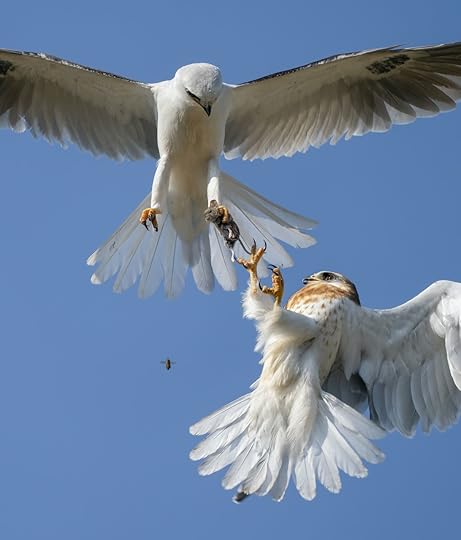
Photo: Jack Zhi/Wildlife Photographer of the Year
Two white-tailed kites fighting over a mouse in mid-air.
“Lynx on the Threshold” by Sergio Marijuán, SpainHighly commended, Urban Wildlife category
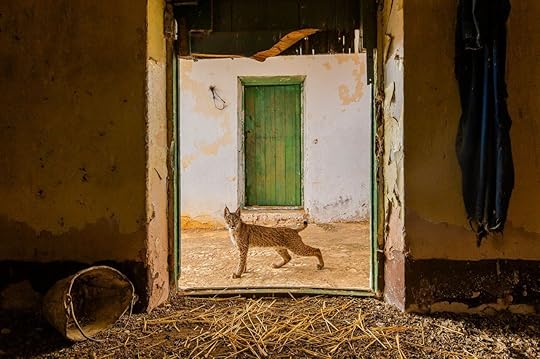
Photo: Sergio Marijuán/Wildlife Photographer of the Year
A young Iberian lynx stopping in front of a doorway of the abandoned hayloft.
“The nurturing wetland” by Rakesh Pulapa, IndiaHighly commended, Wetlands — The Bigger Picture category

Photo: Rakesh Pulapa/Wildlife Photographer of the Year
Houses on the edge of Kakinada city, buffered from the sea by the remains of a mangrove swamp.
“A Caring Hand” by Douglas Gimesy, AustraliaHighly commended, Photojournalism category
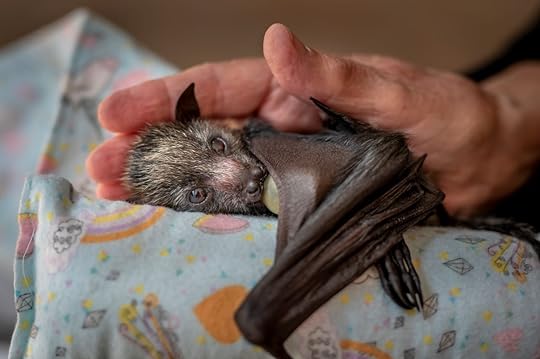
Photo: Douglas Gimesy/Wildlife Photographer of the Year
Gimesy captured the vulnerability of a nursing orphaned bat.
“The Gripping End” by Wei Fu, ThailandHighly commended, Behaviour — Amphibians and Reptiles category

Photo: Wei Fu/Wildlife Photographer of the Year
A red-spotted tokay gecko clamped to the head of a golden tree snake. 
The post Wildlife Photographer of the Year 2020 shows a ‘planet under pressure’ appeared first on Matador Network.
Most beautiful yurts to rent
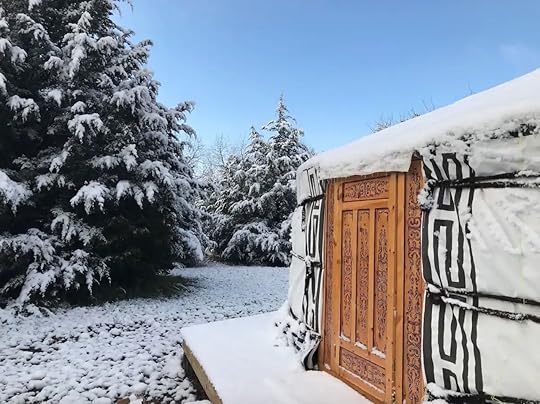
Traditional houses and apartments are all good and well, but why would you rent something banal when you can make your vacations more exciting by booking a treehouse, a log cabin, or even a haunted property? According to a trend report by Airbnb this fall, travelers are so keen to experience new types of accommodations that unique stays like tiny homes, barns, and even caves are “overtaking traditional options in trip searches” on the platform. To make sure you get on the action and get a much-needed dose of escapism in the process, opt for an out-of-the-ordinary Airbnb by renting a yurt.
A circular piece of architecture, yurts originate from Asia, but have become extremely popular in the West as homes and rentals. Yurts traditionally consist of a wooden structure covered by material and are movable, a little like a large tent would, but they are sturdier and offer great weather protection.
We’ve selected the best yurts available on Airbnb this winter throughout the United States, from California to Kansas, Vermont, and more. While the yurts we have handpicked for your next vacation don’t necessarily match the criteria that makes them genuine, classic yurts, they will all transport you somewhere magical and keep you cozy for an unforgettable winter getaway.
We hope you love the spaces and stays we recommend! Just so you know, Matador may collect a small commission from the links on this page if you decide to book a stay. Listed prices are accurate as of the time of publication. See our full Advertiser Disclosure here.
1. “Yur-Treat” near Grand Teton National Park, Idaho
Photo: Airbnb
This small yurt can accommodate three guests in its one queen bed and one twin bed, but it’s better suited for a couple or a single person needing some serious peace and quiet. Built in a grove of aspen trees in Teton County, Idaho, the yurt has gorgeous views of the Teton Mountain Range and is close to Grand Teton National Park and the town of Jackson Hole.
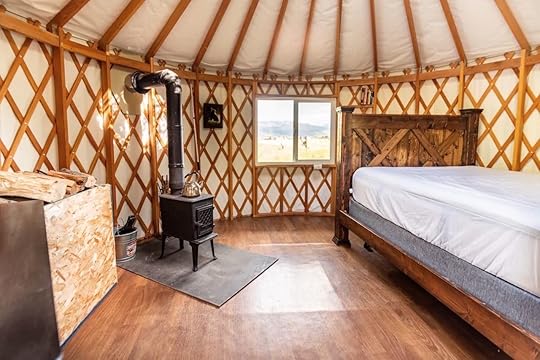
Photo: Airbnb
The yurt is secluded and off the grid, so there’s no running water or electricity, but there’s a wood stove (wood is supplied) to keep you toasty, two outhouses for a rustic bathroom experience, and an outdoor picnic table and a fire pit for a night of stargazing (if they are not buried in snow). In winter, make sure to bring warm clothing and bedding, as well as all the other essentials to stay fed, hydrated, and with light. There’s a creek running just outside the yurt for your use, but it will be frozen in winter so don’t expect a pleasant and refreshing dip in lieu of a shower.
2. Forest yurt for a nature retreat on Whidbey Island, Washington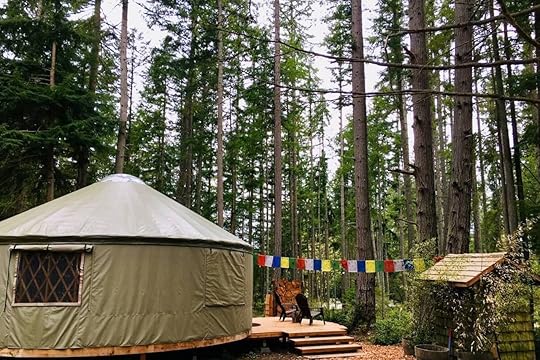
Photo: Airbnb
Vacationing on Whidbey Island is a surefire way to get away from it all. Add to this beautiful destination a stay in this yurt located in a forest of conifer, and you’re in for a serene escape in nature. Although it may look rustic at first sight, the yurt has a king-size bed and a fold-out couch that can sleep four people, as well as a small kitchen with running and hot water, an outhouse with a composting toilet, and an outdoor heated shower. The wood stove keeps the place warm and comfortable, and the yurt is well insulated and heated for year-round bookings.
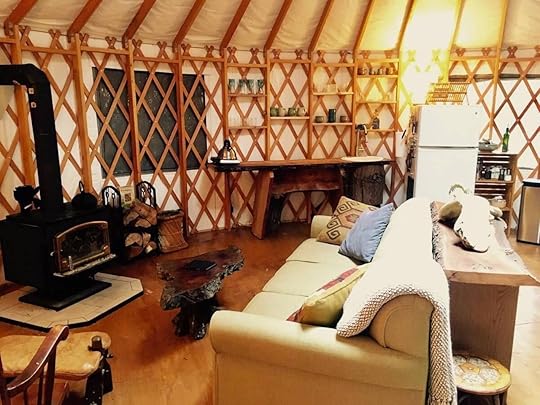
Photo: Airbnb
The site is very private and built on a 24-acre organic farmstead, so you won’t hear any traffic noise, but you’ll hear bird songs, farm animals, and the sound of wind and rain on the trees and the roof of the yurt.
3. Wonder Valley Yurts in Yucca Valley, California
Photo: Airbnb
These small yurts on open desert land will provide all the tranquility one seeks. Free of light pollution, the site is the perfect spot to observe the night sky. There’s an outdoor fire pit and deck chairs to relax outside at night, catch the sunset, or look at the celestial bodies around you, but you can also see the stars through the yurt dome for a very cozy and romantic experience. During the day, hiking and easy access to Joshua Tree National Park are on offer.
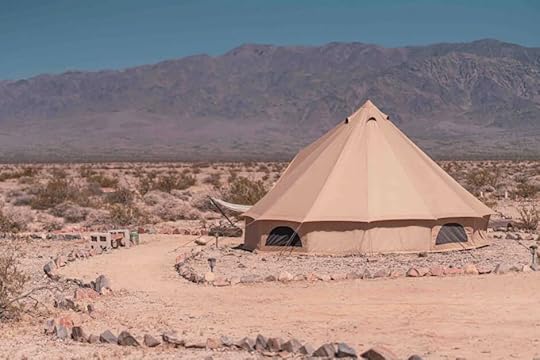
Photo: Airbnb
There’s an outdoor shower with running, potable water, and an outdoor BBQ grill for all your cooking needs.
4. Off-grid Mongolian yurt in Kansas
Photo: Airbnb
Sun & Moon is a beautiful authentic yurt made in Mongolia out of wood, wool, and canvas. Far from Asia, today it is located in a forest setting in Lawrence, Kansas. Completely off the grid, the yurt has no electricity, no Wi-Fi, no running water, and no shower. You’ll be provided with candles and lanterns. There is an outhouse close to the yurt with a water basin and a composting toilet.

Photo: Airbnb
You’ll quickly forget the lack of modern conveniences upon seeing the beautiful front door and the stunning wooden interior decor. Inside, you’ll find a wood stove in the center of the yurt, as well as a double bed to accommodate two guests.
5. Four-season country yurt in Vermont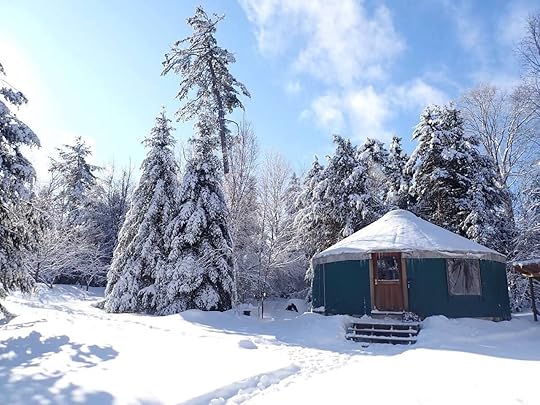
Photo: Airbnb
Only 10 minutes from Montpelier and close to several state parks (Little River, Groton, Camel’s Hump, and Mount Mansfield), this beautiful yurt can accommodate four guests on its queen-size bed and fold-out double futon. Located in a forest setting, the yurt is very private and peaceful — the only sounds you’ll hear are from the inhabitants of the forest.
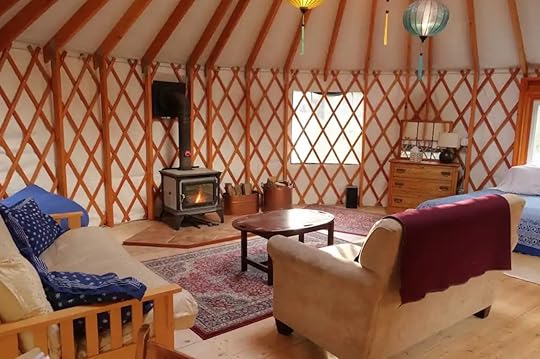
Photo: Airbnb
Inside, there is a soapstone wood-fire stove that the owners will light up before your arrival if you book the yurt in winter. Although the accommodation is very cozy, you’ll want to go out and explore the hiking, biking, and cross-country ski trails and swimming holes just outside your door. There is electricity in the yurt but there is no outdoor plumbing so guests use a portalet. Water is provided by the hosts for washing and drinking.
6. Hillside yurt in Utah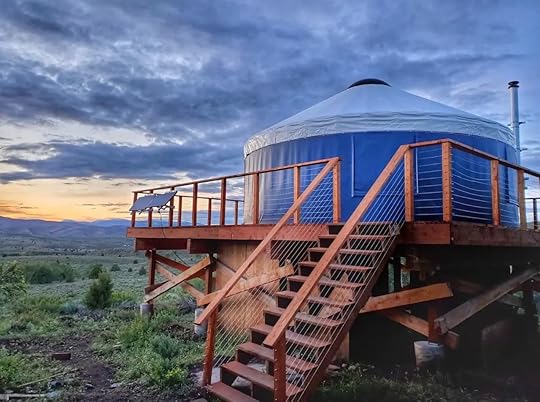
Photo: Airbnb
This large yurt is not a luxury accommodation, but the amazing setting is worth the primitive comfort. Because it can fit 10 guests on its two queen-size beds and six bunk beds, this no-frills, backcountry yurt is a great place for a weekend of outdoor adventures with a group of friends and family members. The wood-fire stove will make things very warm and comfy after a day spent on the many miles of trails nearby, whether that’s hiking, snowmobiling, snowshoes, or cross-country skiing.
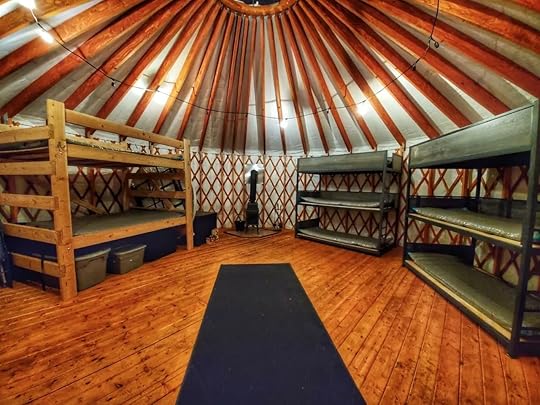
Photo: Airbnb
The yurt is surrounded by nature and wildlife, so, from the deck, you’re able to catch the sunset and look for the bull moose who live on the hill. There is no running water in the yurt so you need to bring your own for washing and drinking, but there is a kitchen with a stove for your cooking needs.
7. Luxury, romantic yurt in Texas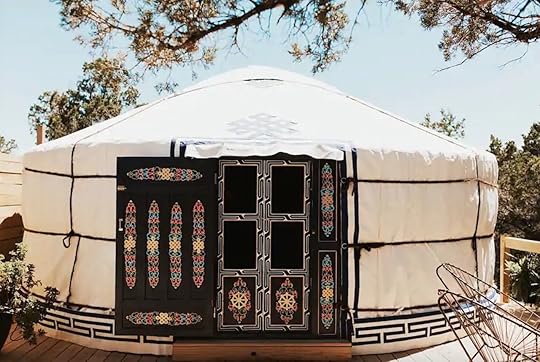
Photo: Airbnb
The best words to describe this yurt in Texas Hill Country are luxurious relaxation. Although it is an authentic Mongolian yurt, made of wood, sheep’s wool insulation, and horse hair ropes holding the structure together, it also has all the comfort of a fancy hotel. It is extremely private with views on the nearby woods, it has a hot tub, AC, heat, a gas fire pit, high-speed internet, an outdoor kitchen, private rooftop deck with a hammock and deck chairs, cable TV, and more.
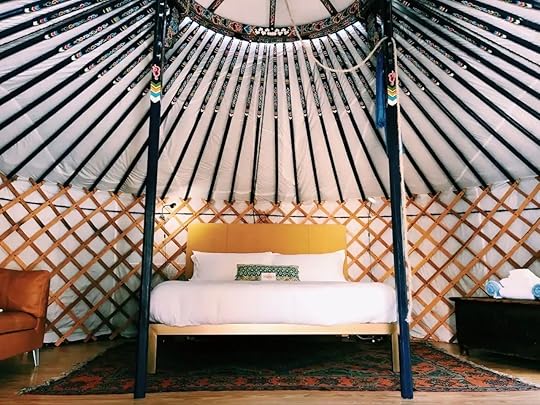
Photo: Airbnb
The private outdoor bathroom is as fancy as the stylish furnishings of the yurt, but it’s the traditional features of the structure that will please travelers the most. With its genuine Mongolian exterior canvas, highly decorated door, and wooden poles inside, you’ll be transported to Asia instantly. 
The post The 7 coziest yurts to rent on Airbnb in the US this winter appeared first on Matador Network.
Matador Network's Blog
- Matador Network's profile
- 6 followers



